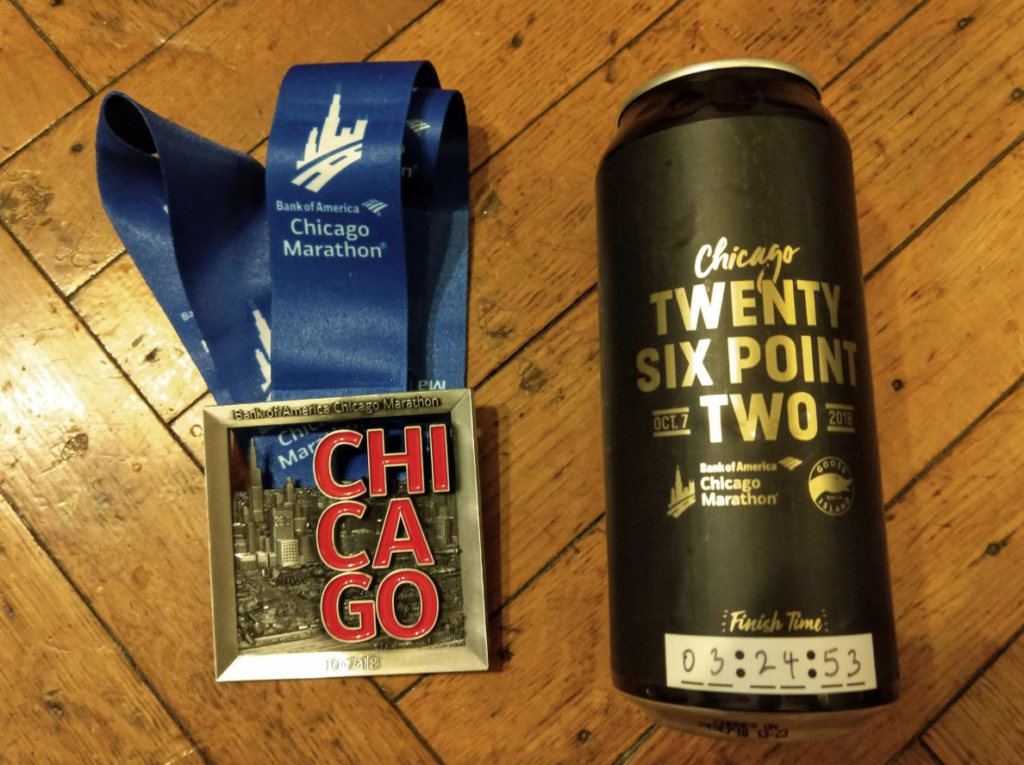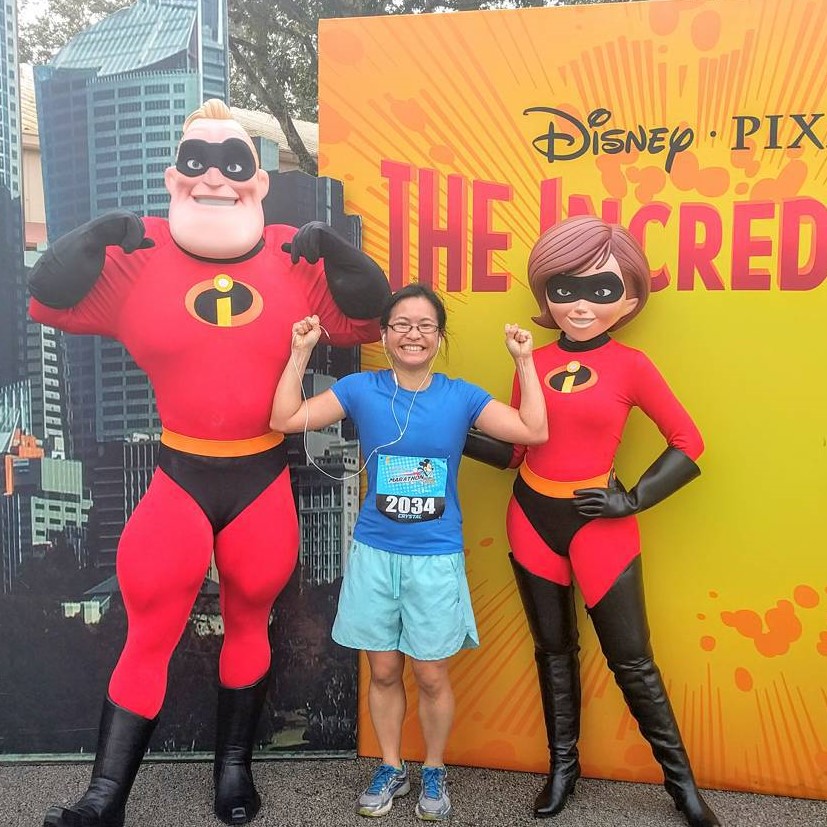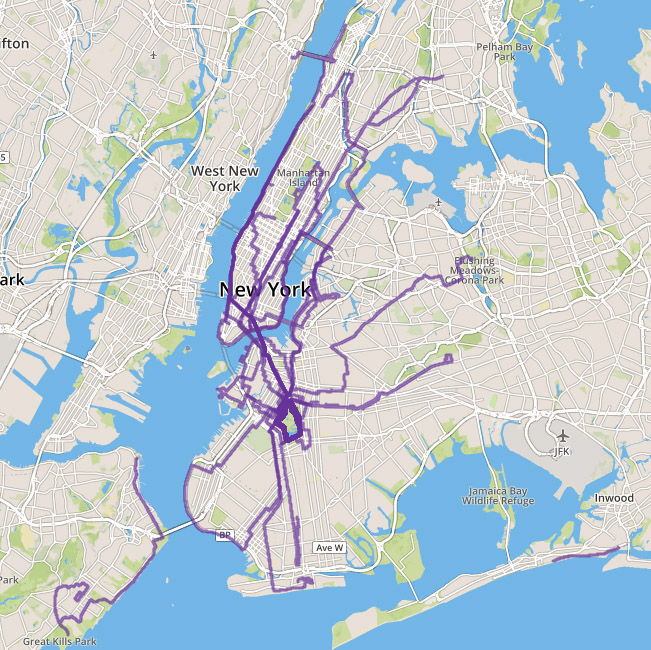So there I was, flat on the ground screaming in pain in the middle of Grant Park. It was not my best look.
I’d been doing the post-race shuffle towards bag check, when suddenly my calf buckled with the worst cramp of my life. As I began yelping and draped myself onto a lamp post, a bunch of people swooped in. Cramp? I nodded, eyes closed. Get her some salt. A runner quickly put my finger in a tube of salt and shoved it in my mouth, while a race volunteer stretched out my leg. This is gonna hurt. But hey, free massage! After what seemed like an eternity, the cramp finally subsided, everyone cleared out, and I was left holding an open beer. I was having an AWESOME day.
Let me back up a bit to explain how I got there, and how this is really my own damn fault.
Chicago Marathon has time qualification standards that are 15 min or so looser than the Boston Marathon standards. You can also get in through the lottery with decent odds (1 in 3). After running a BQ squeaker time last year in NYC, I knew I needed to shave off at least a couple more minutes and figured I’d do it in Chicago, known for being fast and flat. Plus, I lived in Chicago for 3 years, and still have free housing, I mean, friends in the area.
With a date in early Oct, this means a 4-month training cycle starts in early June. Here is how mine went:
- June: Gradually recovering from the Dirty German 50K in May.
- July: Man, it’s really hot in here…and Chicago’s still a long way off…
- August: Trip on a highly technical sidewalk near Greenwood, bashes in right knee. Take a couple weeks off.
- September: I deserve a break, let’s go on vacation for 2.5 weeks and eat lots of ice cream and drink lots of beer!
- October: Oh *@$#, THON IS HERE.
So, while I love seeing everyone’s runs on Strava, Peer Pressure Track Club was making me feel pretty insecure and underprepared. I knew my weekly mileage had been on the low side for me, and my long runs hadn’t been all that long. (In fact, Strava sends you a video after big races, and it told me in cold numbers that I ran 38.9 mile weeks, with a longest run of 18 miles.) On the plus side, I was really well-rested and my knee was feeling 100% again. I also knew that in the spring, I’d been consistently cranking out really long runs and higher mileage. (Thank you, UMTG!) Time to repeat that adage that it’s better to be undertrained and at the start, than overtrained and injured?
In the days leading up to the race, the forecast got rainier and rainier. Fri night in Chicago, there were heavy thunderstorms, and I could see flash flooding in the streets. I checked 4 weather websites obsessively, then on Sat, the NYT told me close your weather app, there is nothing you can do to change the weather. Chagrined, I decided to focus on how much better rain is than 90 degree heat.
Race day, there was a little drizzle as I headed in at a leisurely 6:30 am for a 7:30 am start. (Take that, Staten Island!) The skyscrapers surrounding the park were cloaked with romantic, potentially chafe-inducing mist. But the rain held back, and soon enough, I’d stripped off my trash bag and we were off. It rained lightly during the race, but at that point, I wasn’t worried about staying warm.
The course takes you through 20 Chicago neighborhoods, and from drag queens in Boystown to the arches of Chinatown, it is a 26.2 mile block party the whole way. Zero complaints about scenery or crowd support. Shout-out to Carla and Jack who cheered at mile 8, I was really excited to see familiar faces! And to the other people who yelled “Go Prospect Park!” at me unexpectedly, I appreciate that too, I just couldn’t react in time.
I went out with a conservative goal and a negative split pace band, knowing that I’d be much happier if I finished strong rather than hanging on for dear life. However, Chicago skyscrapers are notorious for causing GPS drift, so I decided to turn auto-lap off on my Garmin, and manually split at every mile marker. I ignored instantaneous pace, instead relying on feel and I sang in my head to keep a steady cadence. I also knew that every block in Chicago is 1/8 mile, so I could roughly calculate my pace based on that. My breathing was steady, and the miles ticked off easily. It was the best I’ve ever felt during a race, which made me wonder if I was really racing.
Here’s the unorthodox part: I didn’t want to screw with my pacing, it wasn’t hot, and I never felt thirsty. So I didn’t drink anything on course. In general, I don’t need a lot of water or fuel while running, and I raced the Jersey City half last month on a sunny hot day with no water. And I brought fuel with me (I make my own) which has some water and salt in it. But basically, no stops, no water.
At the halfway mark, I slowly began speeding up. At mile 22, I decided I wasn’t suffering enough and it was time to really crank it up. At mile 25, I realized I could hit sub 3:25 if I sucked it up and ran hard up the course’s one inconveniently placed hill at mile 26. Final time: 3:24:53.
After the race, you get handed all the usual stuff, plus a Goose Island beer that is only available to marathon finishers. The can even has a spot where you can write in your time! Then you go to the post-race “Mile 27” party, where you redeem your drink ticket for ANOTHER beer. (NYRR, take note.) This no doubt contributed to my massive cramp, but hey, I have a story to tell.
I’ve been told that next time if I drink some water, I can probably shave off another 10 minutes. OH REALLY?
Conclusions: If you train consistently year-round, you can trust in your training, even if the last couple months were less than ideal. Drink something on the course, and don’t reach for the beer first post-race. And use a pace band with a negative split strategy.





